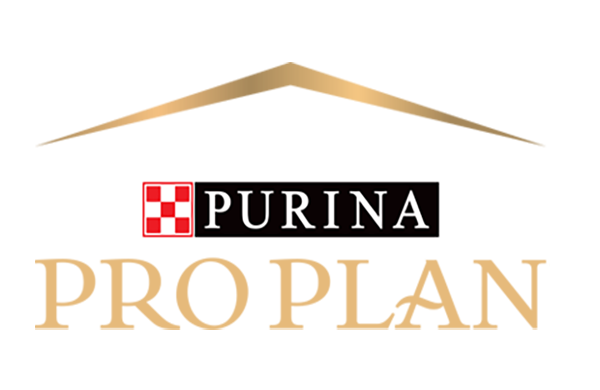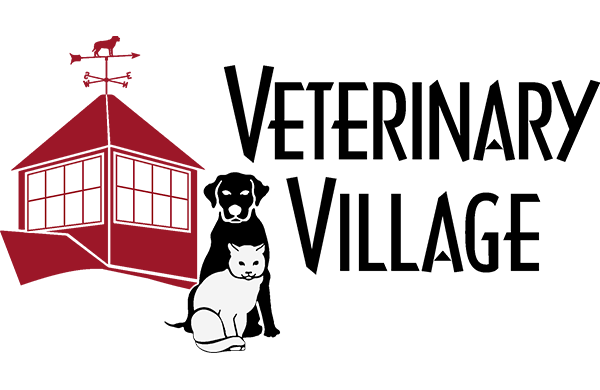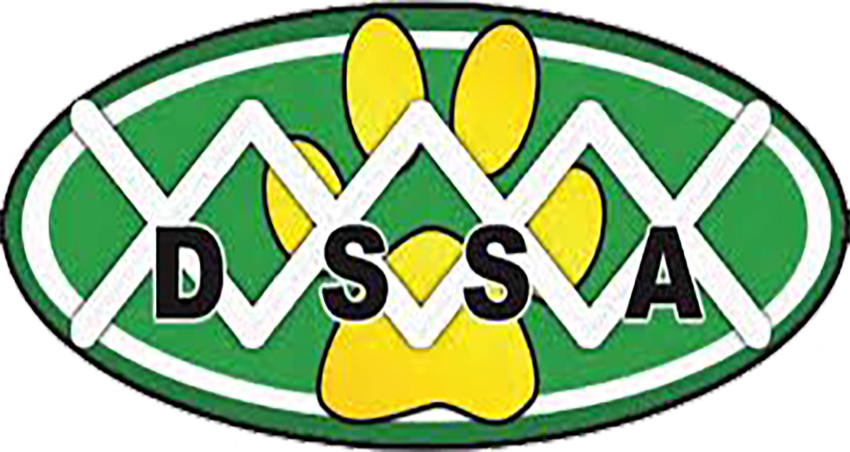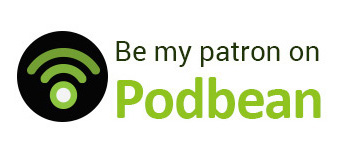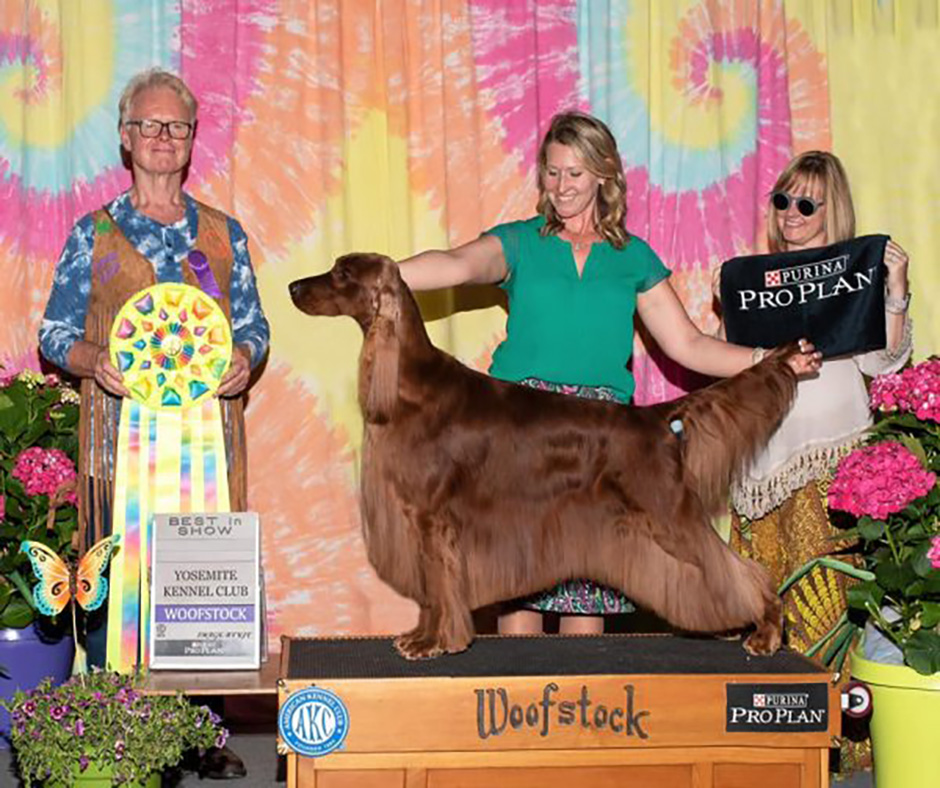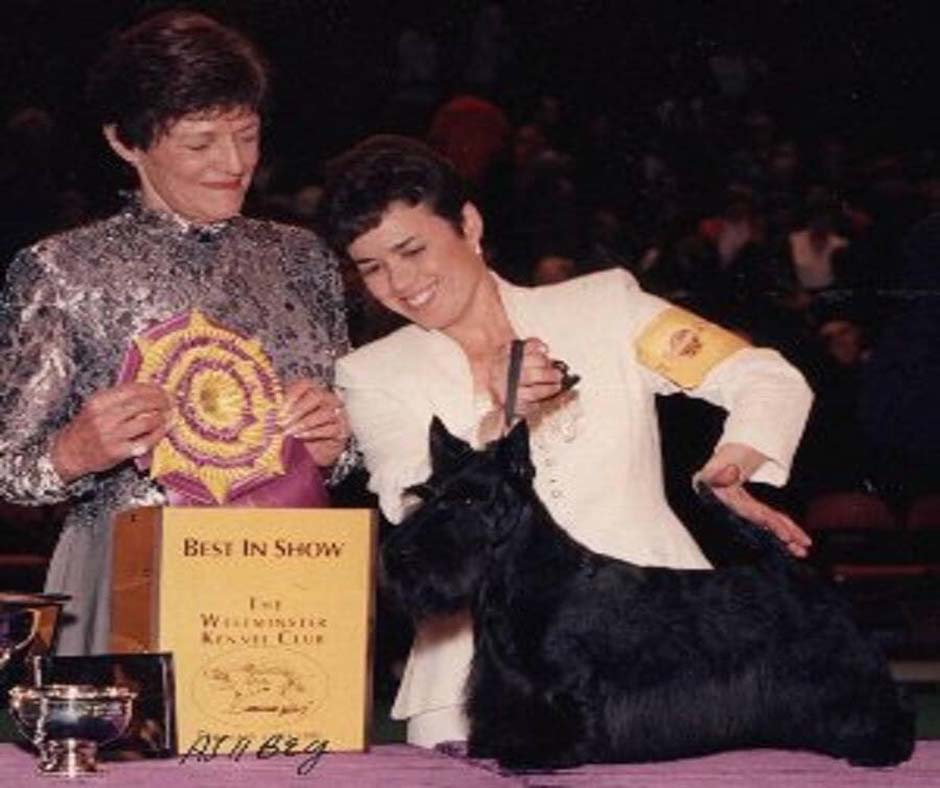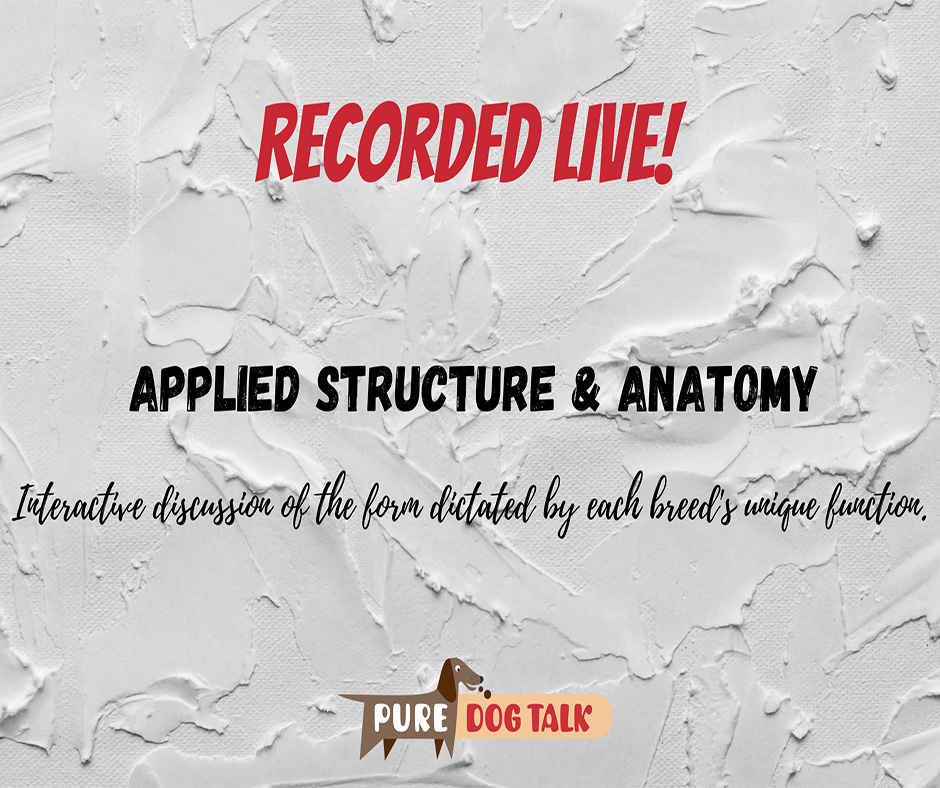285 – Type vs Style in the St. Bernard: Breeders’ Discussion Panel
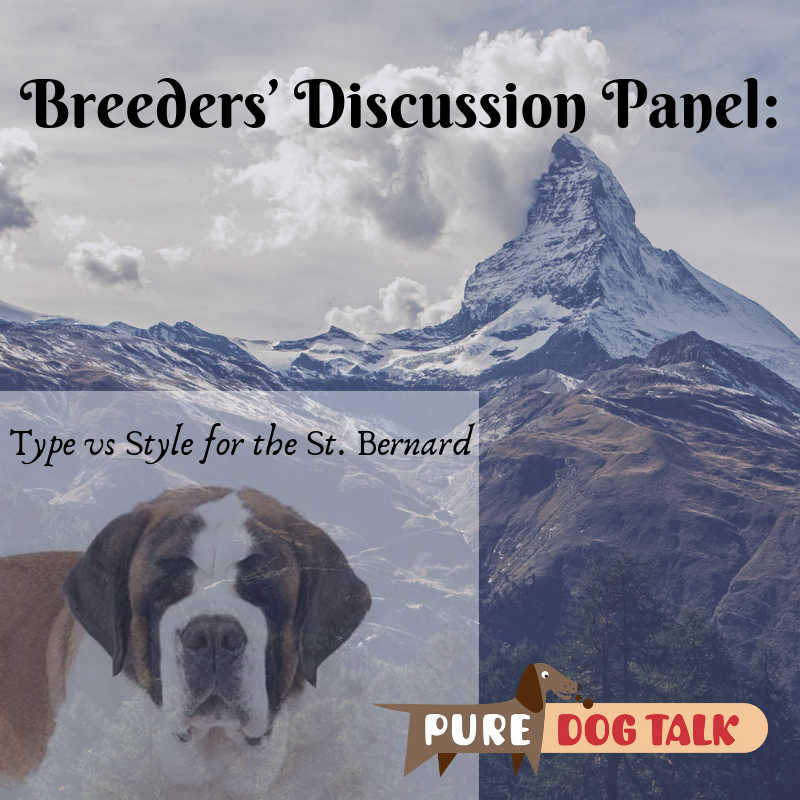
Type vs Style in the Saint Bernard: Breeders’ Discussion Panel
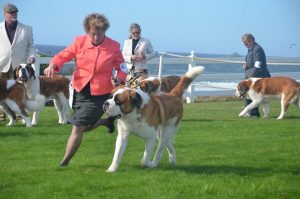 Host Laura Reeves moderated a Breeders’ Discussion Panel at the 2018 Saint Bernard Club of America National Specialty. Three long-time breeders talk type versus style in this fascinating conversation.
Host Laura Reeves moderated a Breeders’ Discussion Panel at the 2018 Saint Bernard Club of America National Specialty. Three long-time breeders talk type versus style in this fascinating conversation.
Type defines a breed. Style informs the breeders’ understanding of the standard. A conversation with successful breeders provides information that’s applicable across all breeds.
From descriptions of developing a breeding program that establishes a recognizable style, to addressing specific pieces of the standard, this wide-ranging conversation is inspiring, enlightening and entertaining.
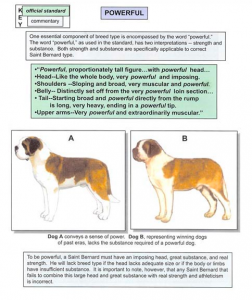
The standard defines the Saint Bernard as “proportionally tall and powerful”. What does that mean to the breeders?
Interpreting the standard from three different perspectives provides unending opportunities for learning. For example, the Saint Bernard standard has no description of correct movement or gait. By understanding the breed history, these breeders apply function to form to answer the question.
Listen to the Pure Dog Talk interview with breeder judge Joan Zelinski for more in-depth conversation about the breed.
The breed standard is included below for listeners to follow along.
Official Standard of the Saint Bernard
Shorthaired
General Appearance: Powerful, proportionately tall figure, strong and muscular in every part, with powerful head and most intelligent expression. In dogs with a dark mask the expression appears more stern, but never ill-natured.
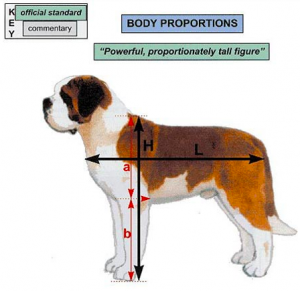 Head: Like the whole body, very powerful and imposing. The massive skull is wide, slightly arched and the sides slope in a gentle curve into the very strongly developed, high cheek bones. Occiput only moderately developed. The supra-orbital ridge is very strongly developed and forms nearly a right angle with the long axis of the head. Deeply imbedded between the eyes and starting at the root of the muzzle, a furrow runs over the whole skull. It is strongly marked in the first half, gradually disappearing toward the base of the occiput. The lines at the sides of the head diverge considerably from the outer corner of the eyes toward the back of the head. The skin of the forehead, above the eyes, forms rather noticeable wrinkles, more or less pronounced, which converge toward the furrow. Especially when the dog is alert or at attention the wrinkles are more visible without in the least giving the impression of morosity. Too strongly developed wrinkles are not desired. The slope from the skull to the muzzle is sudden and rather steep. The muzzle is short, does not taper, and the vertical depth at the root of the muzzle must be greater than the length of the muzzle. The bridge of the muzzle is not arched, but straight; in some dogs, occasionally, slightly broken. A rather wide, well-marked, shallow furrow runs from the root of the muzzle over the entire bridge of the muzzle to the nose. The flews of the upper jaw are strongly developed, not sharply cut, but turning in a beautiful curve into the lower edge, and slightly overhanging. The flews of the lower jaw must not be deeply pendant. The teeth should be sound and strong and should meet in either a scissors or an even bite; the scissors bite being preferable. The undershot bite, although sometimes found with good specimens, is not desirable. The overshot bite is a fault. A black roof to the mouth is desirable. Nose (Schwamm) – Very substantial, broad, with wide open nostrils, and, like the lips, always black.
Head: Like the whole body, very powerful and imposing. The massive skull is wide, slightly arched and the sides slope in a gentle curve into the very strongly developed, high cheek bones. Occiput only moderately developed. The supra-orbital ridge is very strongly developed and forms nearly a right angle with the long axis of the head. Deeply imbedded between the eyes and starting at the root of the muzzle, a furrow runs over the whole skull. It is strongly marked in the first half, gradually disappearing toward the base of the occiput. The lines at the sides of the head diverge considerably from the outer corner of the eyes toward the back of the head. The skin of the forehead, above the eyes, forms rather noticeable wrinkles, more or less pronounced, which converge toward the furrow. Especially when the dog is alert or at attention the wrinkles are more visible without in the least giving the impression of morosity. Too strongly developed wrinkles are not desired. The slope from the skull to the muzzle is sudden and rather steep. The muzzle is short, does not taper, and the vertical depth at the root of the muzzle must be greater than the length of the muzzle. The bridge of the muzzle is not arched, but straight; in some dogs, occasionally, slightly broken. A rather wide, well-marked, shallow furrow runs from the root of the muzzle over the entire bridge of the muzzle to the nose. The flews of the upper jaw are strongly developed, not sharply cut, but turning in a beautiful curve into the lower edge, and slightly overhanging. The flews of the lower jaw must not be deeply pendant. The teeth should be sound and strong and should meet in either a scissors or an even bite; the scissors bite being preferable. The undershot bite, although sometimes found with good specimens, is not desirable. The overshot bite is a fault. A black roof to the mouth is desirable. Nose (Schwamm) – Very substantial, broad, with wide open nostrils, and, like the lips, always black.
Ears – Of medium size, rather high set, with very strongly developed burr (Muschel) at the base. They stand slightly away from the head at the base, then drop with a sharp bend to the side and cling to the head without a turn. The flap is tender and forms a rounded triangle, slightly elongated toward the point, the front edge lying firmly to the head, whereas the back edge may stand somewhat away from the head, especially when the dog is at attention. Lightly set ears, which at the base immediately cling to the head, give it an oval and too little marked exterior, whereas a strongly developed base gives the skull a squarer, broader and much more expressive appearance.
Eyes – Set more to the front than the sides, are of medium size, dark brown, with intelligent, friendly expression, set moderately deep. The lower eyelids, as a rule, do not close completely and, if that is the case, form an angular wrinkle toward the inner corner of the eye. Eyelids which are too deeply pendant and show conspicuously the lachrymal glands, or a very red, thick haw, and eyes that are too light, are objectionable.
Neck: Set high, very strong and when alert or at attention is carried erect. Otherwise horizontally or slightly downward. The junction of head and neck is distinctly marked by an indentation. The nape of the neck is very muscular and rounded at the sides which makes the neck appear rather short. The dewlap of throat and neck is well pronounced: too strong development, however, is not desirable.
Shoulders: Sloping and broad, very muscular and powerful. The withers are strongly pronounced.
Chest: Very well arched, moderately deep, not reaching below the elbows.
Back: Very broad, perfectly straight as far as the haunches, from there gently sloping to the rump, and merging imperceptibly into the root of the tail.
Hindquarters: Well-developed. Legs very muscular.
Belly: Distinctly set off from the very powerful loin section, only little drawn up.
Tail: Starting broad and powerful directly from the rump is long, very heavy, ending in a powerful tip. In repose it hangs straight down, turning gently upward in the lower third only, which is not considered a fault. In a great many specimens the tail is carried with the end slightly bent and therefore hangs down in the shape of an “f”. In action all dogs carry the tail more or less turned upward. However it may not be carried too erect or by any means rolled over the back. A slight curling of the tip is sooner admissible.
Upper Arms: Very powerful and extraordinarily muscular.
Lower Leg: Straight, strong.
Hind legs: Hocks of moderate angulation. Dewclaws are not desired; if present, they must not obstruct gait.
Feet: Broad, with strong toes, moderately closed, and with rather high knuckles. The so-called dewclaws which sometimes occur on the inside of the hind legs are imperfectly developed toes. They are of no use to the dog and are not taken into consideration in judging. They may be removed by surgery.
Coat: Very dense, short-haired (stockhaarig), lying smooth, tough, without however feeling rough to the touch. The thighs are slightly bushy. The tail at the root has longer and denser hair which gradually becomes shorter toward the tip. The tail appears bushy, not forming a flag.
Color: White with red or red with white, the red in its various shades; brindle patches with white markings. The colors red and brown-yellow are of entirely equal value. Necessary markings are: white chest, feet and tip of tail, noseband, collar or spot on the nape; the latter and blaze are very desirable. Never of one color or without white. Faulty are all other colors, except the favorite dark shadings on the head (mask) and ears. One distinguishes between mantle dogs and splashcoated dogs.
Height at Shoulder: Of the dog should be 27½ inches minimum, of the bitch 25½ inches. Female animals are of finer and more delicate build.
Considered as Faults: Are all deviations from the Standard, as for instance a swayback and a disproportionately long back, hocks too much bent, straight hindquarters, upward growing hair in spaces between the toes, out at elbows, cowhocks and weak pasterns.
Longhaired: The longhaired type completely resembles the shorthaired type except for the coat which is not shorthaired (stockhaarig) but of medium length plain to slightly wavy, never rolled or curly and not shaggy either. Usually, on the back, especially from the region of the haunches to the rump, the hair is more wavy, a condition, by the way, that is slightly indicated in the shorthaired dogs. The tail is bushy with dense hair of moderate length. Rolled or curly hair, or a flag tail, is faulty. Face and ears are covered with short and soft hair; longer hair at the base of the ear is permissible. Forelegs only slightly feathered; thighs very bushy.
Our Valued Corporate Sponsors:
Our Esteemed Advertisers:
Our In-Kind Supporters:
KNOWLEDGE IS POWER — FRANCIS BACON
When you become a patron of Pure Dog Talk you’ll tap into an exclusive community of experts to help you and your dog be blue-ribbon best at whatever you do with your purebred dog! Your support helps keep the MP3's rolling at Pure Dog Talk!
As a supporter, you’ll immediately gain access to the weekly Pure Pep Talk SMS, Pure Pep Talk private Facebook group, and priority emails. Patrons can choose to level up to the After Dark Zoom and a Patrons Digital Badge for their website— even a private counseling session with Laura on any topic.

DON'T MISS AN EPISODE!!


